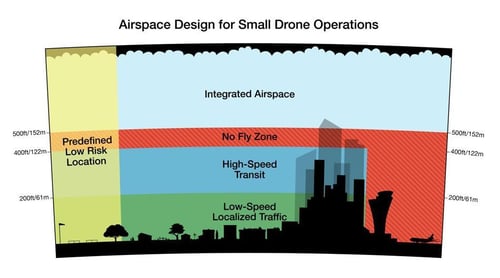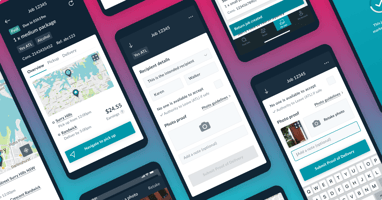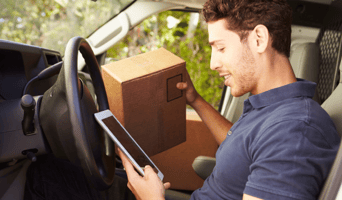Authority to love: Sherpa’s fresh new driver app interface streamlining your Proof of Delivery...
Delivery drones: are they for real?
Innovation is at the heart of the delivery industry. Every day it seems like we hear about a new form of technology designed to remove the current constraints under which the delivery industry operates. The industry naturally reacts to these constraints by coming up with innovative solutions to solve the challenges it faces, to name a few:
- matching the expectations of increasingly demanding online shoppers
- reducing as much as possible the time between when an order is placed and when it is in the customer’s hands
- working around traffic, road constraints, confusing buildings and incorrect addresses
- finding new options for safe parcel drops
Sometimes these innovations seem so futuristic, you can almost be tempted to brush them off as a rocket engineer’s wet dream. But should you? Let’s look at the one that most epitomises the concept of futuristic delivery.
Drones
Everyone loves drones at the moment, especially Google & Amazon. While you can be easily tempted to brush these companies off for trying to ride the PR wave, it seems increasingly likely that they are taking the challenge very seriously.
Because drones happen to come with a lot of challenges. The biggest hurdle drones currently face is regulatory: in the US where most of these delivery drone experiments are happening, the biggest roadblock is the FAA, the Federal Aviation Administration which is in charge of regulating the airspace.
When you’re talking about commercialising deliveries through an entirely new vehicle and sending it up in the air, you’re bound to raise to create a whole set of concerns…
One of the main issues the FAA currently has with drones is that it insists drones be controlled by a human pilot and remain within that person’s line of sight, essentially eradicating (for now) any possibility of large-scale commercial implementation.

Another major concern relates to safety: how safe are drones? There is a huge amount of regulations that drones will have to overcome to be allowed to take off. They have to able to fly around each other, news helicopters, but also power and phone lines. And while these companies would argue they are already tracking really well on the “sense and avoid” systems they have in place, there is still a concerning error rate. A very low one apparently but one that brings us to the next point:
Do people really want drones that bad? When dealing with the assumption that the market is anxiously waiting for the technology to land, one has to consider how much such a service would cost and would it find a huge audience willing to spend a much higher amount for the luxury of getting an item delivered an hour quicker.
Another point to consider is: while drones have already proven perfectly capable of automatically finding an adequate landing area on a lawn, how do you solve the problem of city deliveries? How does a drone manage a delivery located on the 35th floor of a building?
Any logistics expert would be able to write a book about the complexities of city deliveries. For drone deliveries to work in such areas, buildings would have to completely restructure themselves to create a delivery reception area on rooftops or courtyards, and while that’s not entirely impossible, it certainly requires a tremendous amount of adaptation to solve a problem that isn’t really there.
Crowdsourcing and intelligent routing systems are already making tremendous strides in solving last-mile delivery. If it is already possible to get food delivered in 30 min or for a package to arrive in 2 hours, is there really that much of a need for drones?
All in all, it seems relatively unlikely (to me at least) that delivery drones will become a huge part of our existence for at least another decade. What do you think? Will history prove me wrong?


